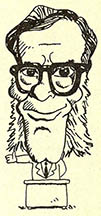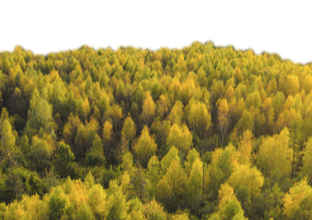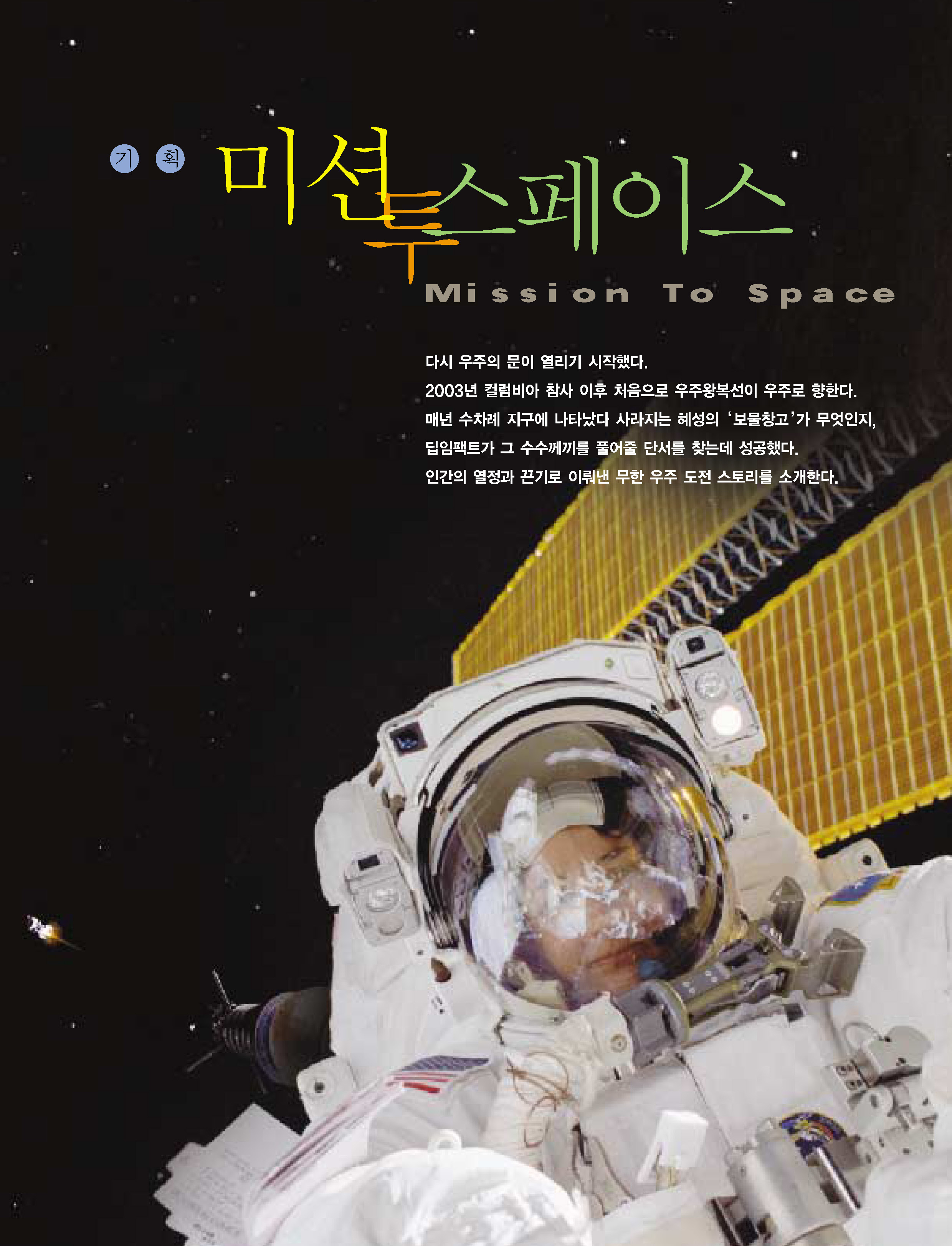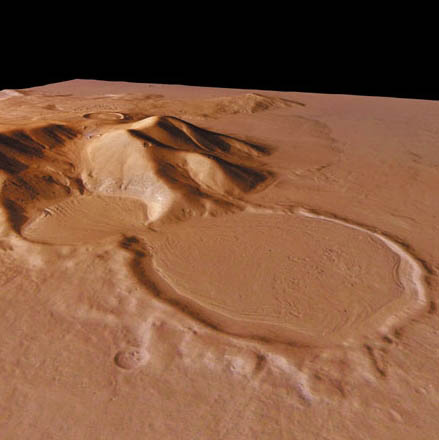
지난 1990년 9월 24일, 아마추어 천문학자인 스튜어트 윌버와 알버토 몬탈보는 각각 태양계에선 가장 거대한 대기중의 폭풍인 것으로 나중에 밝혀진 그 첫번째 징후들을 발견했다. 그리고 그 폭풍은 목성에서 나타난 것이 아니었다.
이 사실은 그 자체만으로도 놀라운 것이다. 왜냐하면 목성은 태양계에 존재하는 '가스로 가득찬 네개의 거대한 행성'가운데 가장 크기 때문이다. 또한 목성은 태양에 제일 가깝고 따라서 태양으로부터 가장 많은 에너지를 받아들인다. 뿐만아니라 공전속도도 가장 빨라 그 대기를 심하게 요동치게 만든다. 이토록 방대한 태양열의 유입과 맹렬한 회전, 그리고 엄청난 중력의 힘은 복합적으로 작용해 목성을 가장 활발한 행성으로 만들고 있는 것이다. 목성의 대기는 서에서 동으로 가로지르는 거대한 폭풍들로 찢겨지는 듯하며 이 폭풍들은 사이클론의 소용돌이에 의해 끊겨지곤 하는 얼룩덜룩한 띠들로 보인다. 목성의 가장 큰 폭풍은 "대 홍점"으로서 지구보다도 더 큰 지역에 걸쳐 지난 수세기동안 지속되어온 허리케인이다.
토성은 태양에서 더 떨어져 있으며 목성보다는 훨씬 작고 그 공전속도도 조금 더 느리다. 이러한 현상들은 토성의 대기가 목성보다 더 조용하고 잠잠하리라고 추측토록 만들며 또 사실이 그렇다.
천왕성은 태양으로부터 토성보다 더 멀리 떨어져 있으며 더 작고 그 공전속도도 더 느린 까닭에 보다 조용할 것이다. 사실 천왕성은 무척 잔잔하여 우리가 이해할 수 있는 대기현상은 거의 나타나지 않는다.
지난 1989년에 보이저 2호가 천왕성과 거의 쌍둥이같은 행성이지만 태양으로부터 더 멀리 있는 해왕성을 가까이 관측했을 때 천문학자들은 천왕성과 같은 조용한 행성을 기대했었다. 그러나 대신 그들이 발견한 해왕성의 대기는 목성과 매우 유사하게 분노하고 있는 모습이었다. 심지어는 목성의 대홍점같은 "대흑점"도 있었다. 도대체 해왕성이 이러한 에너지의 공급을 어디로부터 받을까? 이는 천문학자들을 매혹시키는 문제이기도 하다.
그러나 지난 9월 24일 윌버와 몬탈보가 발견한 폭풍은 해왕성에서 일어났던 것도 아니었다. 그것은 토성의 조그마한 흰점이었다.
이것은 그 자체로는 과히 특기할 만한 사실이 되지 못한다. 토성의 공전주기는 약 29.5년이고 이렇게 공전하는 동안 토성의 북극이 태양이 있는 방향으로 가장 가깝게 기울어질 수 있는 지점을 통과하게 된다. 이 지점은 지구의 '하지'때와 같은 곳이다. 이때 토성의 북반구는 태양으로부터 가장 집중적인 열을 공급받는데 이는 폭풍이 일어나기 쉽다는 것도 의미한다. 그 결과 약 30년마다 토성에선 흰점들이 관측된다.
지난 1900년 가을, 토성은 하지지점을 통과하고 있었으며 따라서 폭풍이 예상됐었다. 그래서 초기의 흰점에 대한 보고는 평범한 것처럼 여겨졌다.
그러나 그때 놀라운 일이 벌어졌다. 그 흰점은 전혀 뜻밖의 모습으로 커지기 시작한 것이다.
흰점이 발견된 지 3일후엔 매우 밝은 타원형이 됐다. 일주일 후엔 너비가 무려 1만마일이 넘도록 확대됐으며 한달이 지나자 5만마일로 더욱 넓어졌다.
10월 23일에 이르자 그 큰 흰점은 토성을 완전히 둘러싸서 태양계에서 관측된것 중에서 가장 거대한 대기 폭풍이 되었던 것이다.
어쩌면 이와같은 발견의 가장 만족할 만한 성과는 허블천체망원경이 그 성능을 발휘하도록 기회를 부여한 것인지도 모른다. 우리가 알다시피 허블 천체망원경에 장착된 거울에는 결함이 있어 천문학자들이 바라던 바 모든 일을 수행할 수는 없었다. 그러나 허블 망원경은 아직 여러가지 일을 할 수 있으며 그 중 하나는 우주권으로부터 토성을 관측하여 먼지와 열기로 가득한 대기권 밑으로부터 우리가 얻을 수 있는 것 보다는 훨씬 상세한 사진을 제공한 것이다.
허블천체망원경은 8월중에 토성을 일상적으로 관측하였으나 새로운 사실을 탐지하지는 못하였다. 아마도 그 폭풍이 시작되긴 했으나 토성 뒷면에 있었던 것 같다. 따라서 허블망원경은 우주의 다른 곳을 관측하기 시작하였고 이에 지구에서 지켜본 그 엄청난 발견은 수주후에야 이루어졌다.
토성의 그 흰점이 거대하게 커나가기 시작할 무렵 허블 망원경은 다시 토성을 향하였고 지구상의 그 어떠한 기기가 제시할 수 있는 것보다 훨씬 상세하게 그 폭풍의 사진들을 찍었다.
이로 인한 결과는 둘이다. 첫째 허블 망원경에 쏟아졌던 그간의 비난을 멋지게 깨주었다는 것이다. 그 망원경은 웃음거리로 매도되어 일반인들로선 허블 망원경이 결코 완전한 실패작이 아님을 깨닫는 기회조차 갖지 못하였다. 그러나 이번 토성의 관측 결과는 바로 허블망원경이 실패작만은 아니었음을 증명하여 주었다.
둘째 허블 망원경이 찍은 사진은 천문학자들로 하여금 행성대기상의 폭풍을 조심스럽게 연구하고 또한 어떻게 발전 변모하는지를 관측할 수 있도록 해주었다는 것이다. 다른 흰점들과 짙은 줄도 나타났다. 상세한 폭풍의 변화상은 그동안 과학자들이 예측하던 것과 일치하였으며 이 또한 대단히 만족스러운 결과다.
토성의 폭풍이 무엇으로 이루어져 있느냐고? 일반적으로 하부대기층으로부터 솟아오르는 가스라고 짐작된다. 토성의 대기는 암모니아로 가득한데 바로 이 암모니아가 위로 솟아오르며 흰 수정처럼 얼어 붙은 까닭에 우리가 보고 있는 것은 수천마일의 암모니아 얼음인 셈이다.
On Sept. 24,1990, two amateur astronomers, Stuart Wilbur and Alberto Montalvo, independently noted the first signs of what turned out to be the greatest atmospheric storm ever seen anywhere in the solar system - and it wasn't on Jupiter.
This, in itself, is a source of surprise, for Jupiter is by far the largest of the four "gas giants" of the outer solar system. In addition, it is the closest of the four to the sun and gets the most energy from it. Not only that, but it rotates more rapidly than any of the others, which puts the atmosphere into violent motion. This combination of a great influx of energy, a tearing spin and a mighty gravitational pull, makes Jupiter apparently the most active of the planets. Its atmosphere is tom by enormous storms that whip across it from west to east, and these storms appear as varicolored belts interrupted by cyclonic spirals. The largest of Jupiter's storms is the "Great Red Spot", a kind of hurricane that has been continuing for centuries and that spreads over an area into which the entire Earth could comfortably fit.
Saturn is farther from the sun than Jupiter is. It is distinctly smaller and it rotates a little more slowly. All this would lead us to suspect that Saturn's atmosphere would be quieter and less turbulent than Jupiter's atmosphere.
- And it is.
Uranus is still farther from the sun, still smaller, still slower in rotation and so it should be still quieter - and it is. In fact, Uranus is a placid planet indeed with scarcely any atmospheric features we could understand.
In 1989, when Voyager 2 observed Neptune close up - that planet being a virtual twin of Uranus but even farther from the sun - astronomers expected to see a planet as quiet as Uranus. Instead, they found Neptune's atmosphere to be raging in fashion very much like that of Jupiter. It even had a "Great Dark Spot" very much like Jupiter's Great Red Spot. Where does Neptune get the energy for this? It's a problem that is fascinating astronomers.
But what Wilbur and Montalvo noted on Sept. 24 wasn't on Neptune, either. It was a small white spot on Saturn.
This was not in itself unusual. Saturn revolves about the sun in about 29 1/2 years, and during that revolution, it passes the point at which its north pole is tilted as closely to the sun's direction as possible. This is the point that is equivalent to the "summer solstice" on Earth. At this time, Saturn's northern hemisphere gets its most intense supply of energy from the sun and that means that storms are more likely. As a result, every 30 years or so, white spots are observed on Saturn.
In the fall of 1990, Saturn was passing through its summer solstice, and so storms were expected. The initial reports of the white spot might have seemed routine, therefore.
But then came the surprise. The white spot began to grow in a totally unprecedented manner. Three days after its discovery had become a very bright oval. After a week had passed, it had spread out over a width of 10,000 miles, and after a month, it was 50,000 miles wide.
At Oct. 23, the "Great White Spot" completely encircled Saturn and was the greatest atmospheric storm ever observed in the solar system.
Perhaps the most satisfactory part of the discovery is that it gave the Hubble Space Telescope (HST) a chance to perform. As we all know, the HST was launched with a defective mirror so that it cannot do all the things astronomers would like to have it do. Somethings, however, it can still do, and one of them is to observe Saturn from space and get far more detailed pictures than we can possibly get from the bottom of our dusty, heat-trembling atmosphere.
The HST took a routine look at Saturn in August, but there was nothing extraordinary to see. The storm was probably beginning, but it was on the other side of the planet. The HST turned to look at other things and it was weeks before the discovery was made from Earth.
Once the Great White Spot began its enormous growth, the HST was turned back on Saturn and it took photographs that showed the storm in far greater detail that anything Earth-based could do.
This had two results. In the first place, it was a wonderful break for the HST. It had been made such a laughing stock that the general public has not been given a chance to realize it is not a total failure. Its studies of Saturn prove that.
Secondly, the great detail in HST's photographs enabled astronomers to study the storm carefully and to see how it developed and slowly changed. Other white spots appeared and dark lines, too. The details of the storm match what scientists have felt ought to happen and that is highly satisfactory, too.
What does the storm consist of? The general feeling is that it is fed by upwellings of gas from below. Ammonia, in which Saturn's atmosphere is rich, moves upward and freezes in white crystals, so what we are seeing is thousands of miles of frozen ammonia.
(c) 1991, Los Angeles Times Syndicate

















